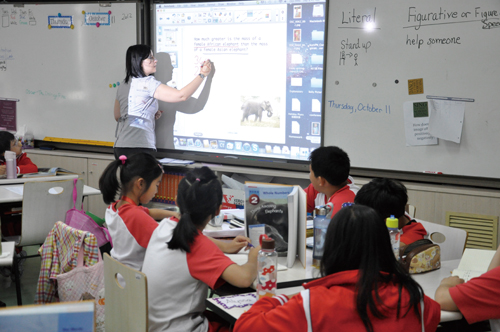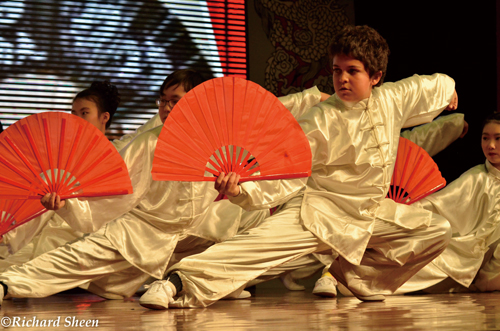
Montessori
The Montessori motto is “Help me do it by myself.” This approach is founded on the belief that every child should be respected as an individual and allowed to learn at his or her own pace within the prepared environment of a classroom. Montessori education fosters intelligent thinking, independence, self-esteem, problem-solving skills, and social aptitude.
Founder Dr. Maria Montessori (1870-1952) noticed that kids experienced “windows of opportunity” as they grew. She based the Montessori method on years of first-hand observations of students in the classroom. As the first woman to graduate from the University of Rome Medical School, Dr. Montessori brought a scientific approach to the field of education.
Famous alumni:
Sergey Brin and Larry Page (co-founders of Google), Jimmy Wales (founder of Wikipedia), Dakota Fanning (actress)
Who does it target?
Globally, Montessori schools vary widely in the age range of their students. They run the gamut from birth to adulthood (0-18 years), but the majority focus on early childhood education (1-6 years). Most of the institutions in Beijing fall into the latter category, but MSB and Daystar offer Montessori education for kids up to age 12.
How is it applied?
Though there are several Montessori societies worldwide, the term “Montessori” itself isn’t trademarked. That’s why it’s crucial for parents to visit their child’s prospective school. Prominent societies like the American Montessori Society (AMS) formulate their own standards and accredit schools. In Beijing, MSB is the only AMS affiliate member.
An authentic Montessori classroom features multi-age groupings, uninterrupted blocks of work time, guided activity choices, and a range of specially designed learning materials. The curriculum focuses on five basic areas: practical life, sensorial, language, math, and culture. Kids progress from simple to complex tasks while fulfilling their natural curiosity. Montessori teachers direct and guide their students rather than dictate. There are no numerical grades in Montessori. Instead, progress is tracked through observation, recordkeeping, and self-reflection. There is also no such thing as failure, since teachers present each child with a choice of work and a variety of difficulties.
Why should parents consider it?
Many child experts agree that the most important period in a child’s development happens between birth and age 6. Dr. Montessori believed that kids at this age had an “absorbent” quality, like a sponge. The idea is that the proper guidance and stimulation will allow them to form patterns for the rest of their lives. In regular daycare, the focus is often on keeping young charges entertained. The Montessori classroom is designed to meet every child’s learning needs with special tools and materials. Students can set their own pace instead of being forced to do activities they don’t like. They become part of a multi-age community, with older kids playing the role of mentors and younger kids feeling supported for the challenges ahead.
Where is it offered?
American International Academy of Beijing (AIAB)
Beijing Jiade Montessori International Kindergarten
Canadian International School of Beijing (CISB)
The Children’s House International Montessori Kindergarten
Daystar Academy
Eduwings Kindergarten
Etonkids International Kindergarten
The Family Learning House (TFLH)
House of Knowledge International Kindergarten (HoK)
The International Montessori School of Beijing (MSB)
Little Village Montessori School (LVMS)
Mammolina Children’s Home Montessori Kindergarten
MIA Early Childhood Education Center
Positive Foundations School (PFS)
How well does this education system prepare students for the real world?
As self-directed learners, Montessori students gain transferrable skills like independence, self-esteem, and cooperation. Many Montessori schools in Beijing use a combination of educational approaches. For example, the core curriculum at MSB includes aspects of Montessori, the IB’s Primary Years Programme and the British education system. The majority of its students who stayed in Beijing went on to schools like ISB, WAB, YCIS Beijing, Harrow, DCB, and BSB.

Multiple Intelligences
The theory of Multiple Intelligences (MI) was developed in 1983 by Dr. Howard Gardner, an education professor at Harvard University. He believed that the conventional notion of intelligence, based on IQ tests, didn’t look at the broader picture. In other words, MI doesn’t ask “How smart are you?” but rather “How are you smart?” In his groundbreaking book, Frames of Mind, Gardner came up with eight different intelligences:
Linguistic (word smart)
Logical-mathematical (number/reasoning smart)
Spatial (picture smart)
Bodily-kinesthetic (body smart)
Musical (music smart)
Interpersonal (people smart)
Intrapersonal (self smart)
Naturalist (nature smart)
Who does it target?
All ages, from preschool to adult education
How is it applied?
MI is a “theory of intelligence … neither a specific educational method or approach.” There is no “right” way to apply it. That being said, the Multiple Intelligence Institute is an international organization dedicated to the promotion of MI theory in educational settings. It proposes three “keystone practices” of pluralization, mobilization, and personalization. Pluralization means giving children the opportunity to explore topics in a variety of ways and placing value on subjects beyond language and math. Mobilization means observing and recording children’s individual strengths, interests, and abilities. Personalization means translating students’ unique skills and interests into actual learning experiences.
In Beijing, the Ivy Schools (Ivy Academy and Ivy Bilingual Schools) are the only institutions in China to be accredited by the MI Institute.
Why should parents consider it?
The MI theory values all students, academic subjects, and ways of learning. By going beyond the traditional focus on language and math, children are given the opportunity to discover their potential. MI theory can also inform parenting methods. The MI Institute offers an online introductory course on MI theory geared towards parents, caregivers, and other important people in a child’s life.
Where is it offered?
Ivy Academy: Ages 2-6 (English-only environment)
Ivy Bilingual School (IBS): Ages 2-6 (English/Chinese environment)
Muffy’s Learning Centers: Ages 2-6
How well does this education system prepare students for the real world?
MI educators would argue that multiple intelligences are the real world. By recognizing that each individual has different strengths, weaknesses, interests, and skills, and harnessing that knowledge in the classroom, teachers can help students reach their potential.
Reggio Emilia
Reggio Emilia is an approach to early childhood education named after the city of the same name in northern Italy, where communities in the surrounding villages sought a way to rebuild society after World War II. Under the leadership of founder and educator Loris Malaguzzi, Reggio Emilia evolved into a parent-led approach that spread all over the world. Malaguzzi believed that children learn through the “hundred languages” of words, movement, painting, drawing, sculpting, shadow play, music, theater, and more.
Reggio Emilia is all about relationships, including the child’s relationship with family, teachers, society, and their environment. This educational approach is self-guided; kids exert a degree of control over their own learning, learn about the world through all five senses, develop meaningful relationships with other children, and have the freedom to express themselves in various ways.
Who does it target?
Reggio Emilia focuses on early childhood education (roughly ages 0-6).
How is it applied?
Reggio Emilia does not have a governing organization, accreditation system, or set curriculum. According to the North American Reggio Emilia Alliance (NAREA), Reggio Emilia is a set of “community-constructed values that have been and are continuously being translated into high-quality early childhood practices.”
The main assessment method for Reggio Emilia is observation. Teachers track the child’s progress by collecting information over long time periods. This data includes photos, notes, videos, works of art, and conversations.
In Beijing, schools tend to combine Reggio Emilia with other educational approaches. House of Knowledge International Kindergarten has the strongest Reggio Emilia influence among schools in Beijing, but its curriculum also borrows aspects of Montessori and traditional Confucian theory. Though an IB World School, the Western Academy of Beijing’s early childhood center offers a Reggio Emilia-inspired program.
Why should parents consider it?
Since Reggio Emilia revolves around family and community, parents are a crucial part of this approach. They’re considered the child’s first teacher, and are valued as partners, collaborators, and advocates for their kids. As a result, many parents extend the Reggio Emilia philosophy to the home.
Where is it offered?
Bella Growth International Kids House: Ages 2-5
House of Knowledge International Kindergarten (HoK): Ages 1-6 Western Academy of Beijing (WAB): Ages 3-4
How well does this education system prepare students for the real world?
As in Montessori, Reggio Emilia seeks to develop skills for lifelong learning. Reggio children are able to step into a new curriculum or subject with the drive and competency to acquire knowledge.
In class, students are not given any answers; instead, teachers prompt them with questions that allow them to form their own conclusions. Students apply their critical thinking skills and have the confidence to ask others for help.
“The integration of Reggio Emilia within the IB PYP at the Western Academy of Beijing is great because it encourages children to develop skills by initiating activities based on their own interests. Our highly qualified teachers are then able to help our students further develop these skills by working alongside them. In this way, teachers respond to the broad variety of needs that young children have, and, through a system of inquiry and research, students become curious and develop a love of learning. Every day our students come to school eager to try out new things, to explore and to ask questions.”
– Holly Reardon, head of Early Childhood Education, WAB
“The Reggio Emilia philosophy focuses on the natural development of children and the relationships that they construct with others and with their environment. In our kindergarten, we view our children as competent learners who are capable of infinite discovery and have boundless potential. Our curriculum therefore is child-centered and child-directed, focusing on the children’s interests, ideas and talents. Reggio approach propels children to acquire skills of critical thinking and collaborating [and]believes that children learn through interaction with others, including parents, staff and peers in a friendly learning environment.”
– Mr. Farshad Danicek, director of education at House of Knowledge International Kindergarten

Chinese National Curriculum
The current Chinese educational system is based upon revisions to national education that followed the implementation of The Four Modernizations presented by Zhou Enlai in 1974. These four modernizations – to develop agriculture, industry, technology, and defense – are considered the four goals or pillars of modern education in China.
Famous alumni:
David Brooks (American president of the South Korea and Greater China Division of Coca-Cola), Mika and Charlotte MacInnis (sisters and American hostesses at CCTV and BTV)
Who does it target?
When bilingual or hybrid education programs are available in Beijing, they generally target parents who wish to fully immerse their child in a Chinese-language curriculum in order to understand Chinese culture and emerge from the school system fully literate in Mandarin.
How is it applied?
Divided into a 6-3-3 system (six years of primary school, followed by three years each of junior and senior middle school), the Chinese National Curriculum relies heavily on public funding and the designation of “key school,” which receive greater portions of government funding. These schools are intended to serve the most academically gifted and thus are considered the most prestigious. At the secondary level, “key schools” are like college prep schools in the West. National entrance exams are required for admission to both senior middle school (Western high school level) and university.
Schools in Beijing that administer the Chinese National Curriculum through a bilingual model usually assess a child’s Mandarin language level before placing them in the program. Mandarin language classes are divided into small groups based on ability.
Why should parents consider it?
The single greatest benefit starts with the complete immersion in Mandarin. All subjects are taught in Chinese, thus ensuring your child’s literacy and fluency in the language. Additional benefits include an environment in which Confucian ideological roots provide teachers with palpable respect. Not only do they enjoy un-taxed salaries and a national holiday (Teacher’s Day), but students are expected to, first and foremost, obey their instructions making classrooms much stricter, controlled spaces than in Western schools. If more discipline is needed for your child, a Chinese classroom may be the answer. Furthermore, this system enforces the notion of work ethic, thus resulting in longer school hours and increased amounts of homework. There is the built-in belief that all children can achieve regardless of their background as long as they put in the effort. For example, Beijing 55 boasts that 100 percent of their graduates are accepted into the Chinese university of their choice.
Where is it offered?
Chinese public schools are required by law to accept children of legal foreign residents. Unlike local children, however, foreigners must pay a yearly tuition. The following are examples of local schools that provide bilingual or split systems: Beijing No. 55 High School, Huijia Kindergarten, and Daystar Academy. For a fuller list, see p35.
How well does this education system prepare students for the real world?
There are more than 100 million people learning Mandarin all over the world. Establishing a child’s language and literacy in Mandarin early will provide them with much greater opportunities for a professional future in Asia and internationally. Foreign students who attend bilingual schools are also provided with cultural and social observation classes in order to better understand Chinese national conditions before entering post-secondary schooling in China or the workforce.
Resources
The College Board
Includes information on the AP program and SAT test fees, online registration, practice tests, and college applications.
www.collegeboard.org
UCAS
UCAS manages applications to universities in the UK. Prospective students can search for courses, look up tuition fees, and apply to colleges online.
www.ucas.com
IB Official Website
Includes information for parents, students, and educators, as well as a searchable database of IB World Schools.
www.ibo.org
Association Montessori Internationale (AMI)
AMI was founded by Dr. Montessori to maintain the integrity of her life’s work.
www.montessori-ami.org
American Montessori Association (AMS)
A US-based organization that offers Montessori resources and school accreditation.
www.amshq.org
Multiple Intelligence Institute
Dedicated to the understanding and application of MI theory in educational settings.
www.miinstitute.info
North American Reggio Emilia Alliance (NAREA)
NAREA is a US-based alliance for the promotion of Reggio Emilia in the classroom.
www.reggioalliance.org
Reggio Children
Home of the Centro Loris Malaguzzi non-profit organization founded by the municipality of Reggio Emilia.
www.reggiochildren.it
For comprehensive listings of the schools mentioned, refer to the index on p33.
To read the first part of the feature, click here.



